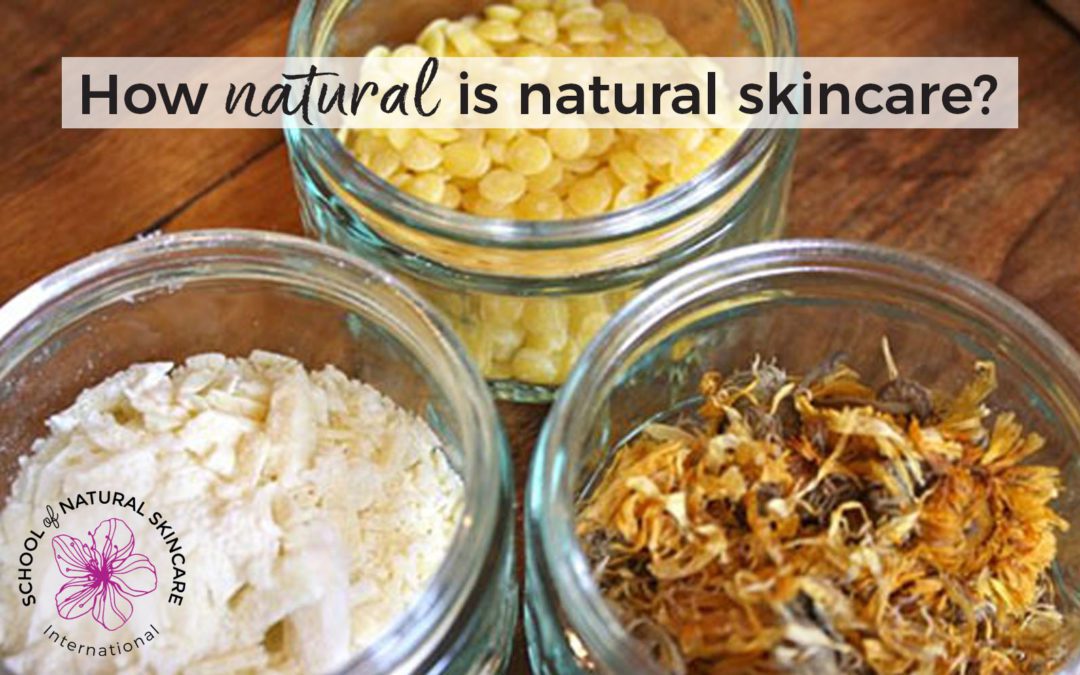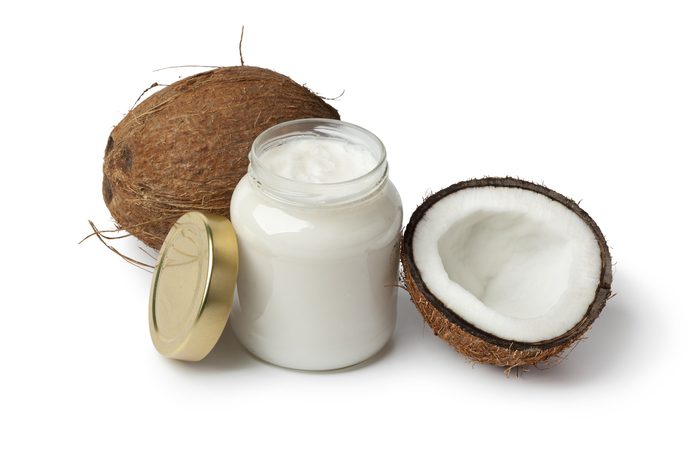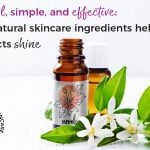“Is this natural?” We’ve heard many of our students ask that question about a wide spectrum of ingredients, as they move through our courses, or sometimes it will be posted in our online student forums.
The answer is not so straightforward, and it actually poses a really personal question right back toward you: Do you think it is natural? Do your customers think it’s natural?
Each person has a different interpretation and definition of the term natural. With the added complication of being a widespread global industry which currently does not have regulation or governance guiding terminology, which leaves the natural formulator and customer confused about what to call or define as natural or unnatural.
By developing your own definition of what you consider natural, you are creating a clear boundary and focus for you, your skincare brand and your company.
Degrees of natural
There are varying degrees of natural. Starting with the most raw, organic version of something naturally occurring in nature, being unrefined, unprocessed and pure. An example of this would be raw, organic unrefined butters and oils such as shea butter, cocoa butter or coconut oil. These oils are cold-pressed and filtered, and that is the extent of their processing. Almost everyone would define this as natural.
There are many naturally occurring ingredients which are refined and processed, sometimes with a natural process such as cold-pressing or filtration. There are methods of processing such as bleaching or deodorizing where a chemical or substance is applied in order to achieve the desired effect. The end product is something which many would call natural, however, it has been chemically altered in what some may define as an unnatural or chemical process.
Consider the case of coconut oil: most would consider virgin, unrefined and cold-pressed coconut oil to be quite natural. Fractionated coconut oil however, has been chemically altered with heat to separate the fatty acid chains to result in a refined, clarified, deodorized and liquid oil (at room temperature). Some may consider fractionated coconut oil to still be natural as it is clearly from natural origin, however, others may consider it less so, as it has been chemically processed and altered from its natural, original form.
Additionally, there are naturally occurring ingredients which are synthetically processed to become an entirely different chemical and structural substance. An example is castor wax, which is actually castor oil that has been hydrogenated by adding an H2 (hydrogen) molecule, along with a chemical catalyst such as nickel, to result in a hard and brittle wax. Hydrogenation is often used to either reduce or saturate an organic compound; castor wax being an example of saturation. Castor wax is commonly used in the cosmetic industry as a thickener and moisturizing agent.
Furthermore, there are ingredients which have been originally derived from nature and are now mass-produced synthetically through replication in a lab setting. For example, sorbic acid, which is a preservative commonly used in the food and cosmetic industry, is originally derived from rowan berries. Sorbic acid is often now sold as a synthetic nature-identical, which is produced in a laboratory.
Many mainstream beauty brands are leveraging the natural trend, by creating formulas which are synthetic and natural-ingredient combinations. Some of the ingredients are of natural origin or are naturally derived (although likely synthetically processed or altered in some manner), so the manufacturer and their marketing teams may communicate the product to consumers as being more natural or green.
On the far spectrum, there are entirely synthetic ingredients. An example of this would be parabens. These ingredients are created and processed in a laboratory and have no ties to nature or the natural world whatsoever. (However, to clarify, there are some parabens which are actually nature-identical synthetic replicas.) These ingredients are often referred to as chemicals or synthetics. Many people are growing uncomfortable with the use of synthetic ingredients such as parabens, for example as they have been criticised for possible bioaccumulation effects (accumulation in body tissues or tumors) and hormone-mimicking behaviours. Other synthetics have been linked to human or environmental toxicity.
We hope this will help you decide on your definition of natural, so you can formulate with this in mind.
This will help you to communicate and market your brand and product advantages and benefits, while also helping you clearly and easily evaluate and select natural products for you and your family, based on their definition of natural. It is key to define natural for yourself, rather than allowing others to determine what natural means for you.
Useful definitions
Below are some definitions which may help clarify the terminology around ‘natural’, and help you to define what is (and is not) natural for you.
Natural/all-natural – May indicate the product is made entirely or partially from natural or naturally derived ingredients. May also be communicated as “contains (only) natural ingredients”, however, note this term is not regulated or universally defined in any way.
Minimally processed – Often referred to as raw, virgin or unrefined, this refers to an ingredient which is closest to its whole, natural form, with little to no processing – such as filtration or cold-pressing. Ingredients which are minimally processed retain all or most of their beneficial properties.
Synthetic-free – Usually indicates there are no artificial, synthetically derived or synthetically synthesized ingredients.
Chemical-free – Usually a marketing-term to indicate there are no artificial, synthetic or toxic ingredients within the product; implies the product is safe, healthy or less harmful in some manner. This term can be challenged or misunderstood if used, as it depends on each person’s interpretation of what consists of ‘chemical’. From a scientific perspective, the term ‘chemical’ may refer to something as natural as H20.
Toxic-free – Often indicates there are no toxic, harmful, unsafe or otherwise unhealthy ingredients or processing in the product.
Organic – Organic certification is regulated by regional bodies; formulators should keep informed of organic regulations within their selling markets. For example, the USDA requires the organic label to contain at least 95 percent organically produced and processed ingredients. A label may indicate a percentage of organic ingredients in a product, however, any product containing less than 70 percent organic ingredients is not permitted to use the organic label. Read more about Organic Certification here.
The beginner’s guide to formulating natural skincare products (from scratch, like a professional)!
The essential foundation you need to help you start creating your own natural skincare products from scratch rather than simply following recipes!
Download this fabulous guide and you’ll learn:
- What formulating is and why you need to be doing it!
- The difference between following recipes and formulating your own products.
- How to formulate like a pro! Seven top tips for becoming a confident skincare formulator.
- Our step-by-step process to designing products people love.
- Four easy ways to personalize your skincare products.
- Choosing the right carrier oils for your beauty products.
PLUS: TWO FREE WORKSHEETS!
- Our Cheatsheet Download: How professionals design skincare products (taken from our Diploma in Natural Skincare Formulation).
- Our Safe Product Checklist: How to make sure the skincare products you create are safe and stable.













